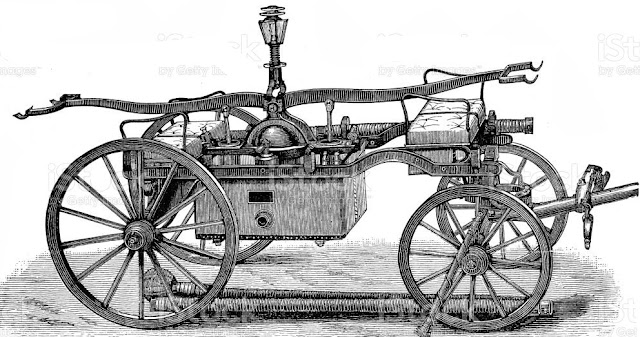At 9½ o'clock on Sunday forenoon, smoke was seen issuing from the one-story brick building attached to the Works of the American Car Company and occupied by the Brass and Iron Foundry, Blacksmith, Cleaning and Moulding Shops.
In the 1850s, Chicago was home to several large railroad car makers, including the American Car Company, the Eagle Works, and the Union Car Works, which each employed about 300 men. The American Car Company of Chicago had begun building passenger cars, freight cars, and baggage cars in November 1852. It carried on an extensive manufacture of railroad cars in 1853/54. The company was located on the Lake Shore at the foot of Rio Grande Street (26th Street today). The section surrounding the American Car Company works became thickly settled and was a village known as “Carville,” which was annexed by Chicago on February 12, 1853, the second extension of Chicago's city limits (green sections).
The fire is supposed to have been taken from a stove in which a fire had been kindled an hour previously. The flames spread to all parts of the building, and it was only through the utmost exertions of the immediate neighborhood. Several of our active citizens gathered together on the alarm being given that the extensive machine shop (a wooden structure) was saved.
The interior of the Foundry, and the West wing of the building, occupied as a Blacksmith Shop, was all burned on the inside, and the roofs fell in; but the brick walls were saved and can probably be used in rebuilding. The East wing, occupied as a Moulding Shop, was entirely destroyed—being a frame structure.
 |
| Bucket Brigade. This illustration is a visual aid. |
Through the untiring exertions of those assembled on the ground, the flames were confined to one building, although they had nothing but buckets of water with which to fight the fire. After the engines had arrived on the spot, there was a serious difficulty in procuring water, and № 7 was fed by lines of men passing pails of water from the cisterns [1].
The entire loss is probably about $5,000 ($182,000 today)—but the damages to the Company in having their Works kept inactive will be much greater than the amount of property destroyed. About 150 workmen will be thrown out of employment by this conflagration. However, the energy of the Company will doubtless have the building reconstructed and at work again in about four weeks. most of the workmen saved their tools, but about all of the patterns, etc., were destroyed. There were fortunately, no cars injured.
This fire will be a serious inconvenience to many of the Railroads in the vicinity, who were relying on the American Car Works for their running material, It was fortunate that the conflagration was not more disastrous. Insured for $3,500 ($141,000 today).
Compiled by Dr. Neil Gale, Ph.D.
[1] A cistern is an artificial reservoir or tank for storing liquids, especially water. Cisterns are typically buried tanks made of brick or metal that are designed to capture and store rainwater. Cisterns can range in capacity from 100 gallons to several thousand gallons.
























